About JLL
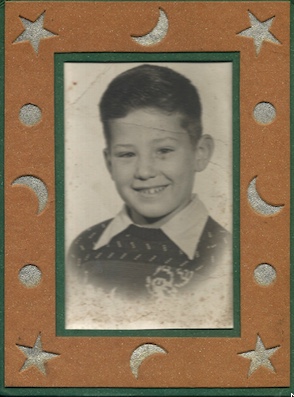
Age Ten, 1955, Friendship, Maine
John Lamb Lash (b. 12/3/45 6:01 PM in New York City) has been called the true successor of Mircea Eliade and the rightful heir of Joseph Campbell. Unlike those two world-class academics, John is a self-educated free-lance scholar who combines studies and experimental mysticism to teach directive mythology: that is, the application of myth to life, rather than its mere interpretation. He is a leading exponent of the power of myth to direct individual experience and drive historical events over the long term. An expert on sidereal mythology, naked-eye astronomy, precession, and the World Ages, he also teaches the critique of belief-systems. He is internationally known for presenting a radical revision of Gnosticism, including original commentaries on the Nag Hammadi codices. He also presents the only complete restoration by any scholar of the Sophianic myth of the Pagan Mysteries, the sacred story of Gaia-Sophia, recounting the origin of the earth and the human species from the galactic core, the Fallen Goddess Scenario.
In the unknown dolmen,
Punta de Gracia, Andalucia, Spain, 2010
Biographical Background
John’s father died two months before he was born, making him the son of a widow (Parzival motif). His childhood was spent in the idyllic fishing village of Friendship, Maine where he lived with his mother, step-father, and half-sister from the age of three until 17. He graduated from Waldoboro High School in June 1963 as valedictorian. During high school, he showed high skill in mathematical studies and ranked in the 99.9 percentile on the national scale of student achievement. Upon graduating, he briefly attended the University of Maine in Orono, where he met professor C. F. Terrell, a world-class Ezra Pound scholar, who became his mentor and life-long friend. He was attending history class UM Orono when Kennedy was assassinated in November 1963.
Expelled from college for failure to attend classes, John left the USA and traveled for three years around the world, visiting 30 countries and living for a while in Japan. He recounts his spontaneous mystical experiences in India, Nepal, and Cambodia (first encounter with the Organic Light) in the autobiographical work, Severed Rose.
Upon returning from his travels in 1966, John met Jan Michele Kerouac, the daughter of Beat Generation icon Jack Kerouac. Living at Yelapa (Puerto Vallarta) in Mexico, they wrote a novel together (“The Influence”) about the Sixties and LSD. They were married for four years and remained close friends for 29 years. In 1987 John began a friendship lasting 22 years with Joanna Harcourt-Smith, the ex-wife of counterculture guru and psychonautic celebrity of the Sixties, Timothy Leary. Oddly, both Jan Kerouac and Timothy Leary died within a week of each other in June 1996.
In 2001, sponsored by the Marion Institute in Marion, Massachusetts, John brought metahistory.org to the internet. In that same year he returned to his adolescent passion for films. In 2002 he completed his first screenplay, SABINA, based on the life of Sabina Spielrein, the first mistress of C. G. Jung. In 2010 he co-authored DR SAX, based on the novel by Jack Kerouac. Due to inheritance through Jan, John co-owns rights to a number of her father’s literary properties, including Dr Sax and On the Road, and owns full rights to Desolation Angels and Satori in Paris.
Currently John is working on two screenplays: AMERICAN GRAIL, an adaptation of the legend of Parzival to a “cowboy ‘n injun” adventure set in the 1880s in the Wild West, and LYDIA’S VOW, an account of the diaspora of the Mysteries. Recently, the completed a commissioned screenplay titled THE GNOSTIC LOVE TRIANGLE, based on Not in His Image.
His published works are:
The Seeker’s Handbook (1991)
Twins and the Double (1993), also in Japanese
The Hero – Manhood and Power (1995)
Quest for the Zodiac (1999)
Not in His Image (2006 – revised 2021) also in French, Spanish, Swedish, Finnish, Italian, Portuguese, Japanese
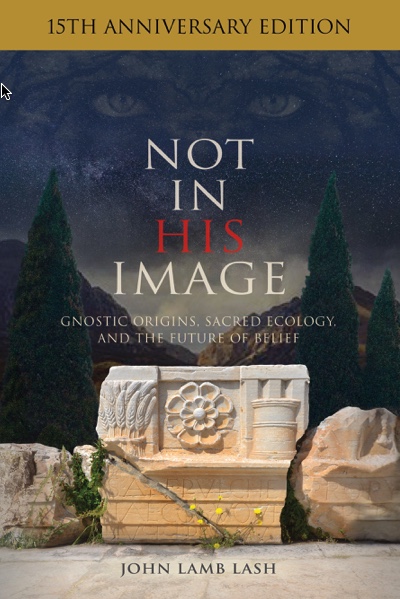
From 1998 through 2009 John was associated with the Marion Institute, initial sponsors of the metahistory.org. In November 2001 he spoke on Gnosticism with Elaine Pagels (The Gnostic Gospels) at a conference in Marion. Subsequently, he developed Gnostic material, the recovery of the Mysteries, and the Sophianic visiuon of life extensively on metahistory.org, which he calls a teaching site. He was the first person to introduce the term “archon” (drawn from Gnostic writings) to public discussion on the Internet.
In 2004 John designed, wrote, and launched the site futureprimitive.org and arranged with the Marion Institute to engage Joanna Harcourt-Smith as host and admin. Originally, the site was conceived to serve as a networking facility for alternative (“emergent”) communities around the world, and to support the oral traditions of poetry and storytelling.
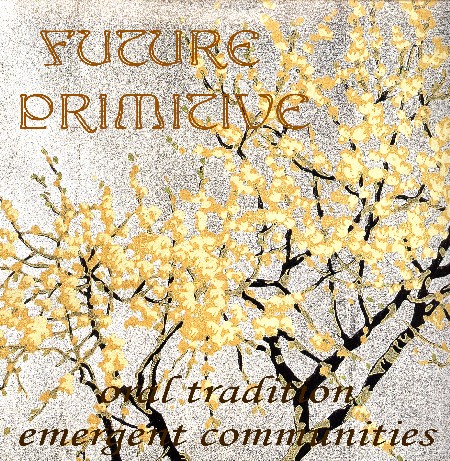
Original template for futureprimitive.org, created in Gaucin, Spain, in December 2004. Painting by Gustave Baumann.
With the launch of metahistory.org in June 2002, John’s writings and interviews on an array of topics began to spread through the Internet. In November 2006 Chelsea Green Publishing, in close association with the Marion Institute, released Not in His Image. In April 2009, after a period of productive collaboration lasting seven years, the Marion Institute withdrew sponsorship of metahistory.org. By that time, John had written the equivalent of 20 books for the site. His association with Joanna Harcourt-Smith also ended at that time.
In December 2006, a month after Not in His Image was published, John discovered the Paris Eadwine Psalter at the National Library in Paris. He introduced his analysis of this extraordinary artifact. a medieval prayer-book loaded with psychedelic imagery of mushrooms, in The Discovery of a Lifetime.
Planetary Tantra
In October 2008, John Lash introduced Planetary Tantra and “interactive magic with Gaia” through the archetype/icon of the Shakti Cluster. This material is intended to orient the general public toward free-form experimental mysticism grounded in an intimate commitment to the earth. Writing on Gnostic/Buddhist parallels, the Mahavidyas, and other topics generated by the Terma, John added another five books to the inventory of metahistory.org.
The creative turbulence of the Terma produced two spin-offs in the form of the Yeats Conversions, series one (“Refuge for the Unborn”) and two (“Tantra Outbound”). All in all, John converted over fifty poems by W. B. Yeats into lyrical meditations on Tantric themes and Tibetan Buddhist teachings about desire, enlightenment, and impermanence. The Yeats Conversions include controversial (“transgressive”) writings on Kala Tantra and Gaian sexual magic.
Between March 2011 and March 2014, John conducted the Gaian Navigation Experiment (gaiaspora.org) as an exercise in creative imagination along the lines proposed, but not achieved, by Joseph Campbell. Using the Sophianic narrative of the Mysteries as the framing device, he led a group of students around the world through an initiation into the mind and activities of the Earth Goddess, Gaia-Sophia. Currently, a team of volunteers are transcribing the 144 talks of the GNE, to be combined with diverse writings, charts, and illustrations, and published as the Gaiaspora Logs. This material in transcription runs to ten volumes of 200-250 pages each.
Currently, the approximate inventory of all writings by JLL runs to twelve single-spaced pages in A4 format.
In December of 2014 he introduced the Kalika War Party.
After an absence of a year (October 2015-16), John returned to teaching on the Internet with a new platform within metahistory.org, mythophrenia. Working with a collaborator, he introduced the ADL Manifesto. In 2017 he presented a 78-part series on his You Tube channel, Mandela Effect Decoded.
From October 2015 to May 2016, John offered the first course for training in Celestics / StarBase in which he reprised and synthesized his work in astrology extending over 35 years. Quest for the Zodiac (above, published 1999) describes how he worked out the meaning and application of the real-sky zodiac, consisting of visible stars and constellations, by contrast to the popular zodiac of astrological signs, which is is invisible. His system of tracking phylogenetic transfer — the inheritance an individual draws from the human species at large, rather than from chromosomally determined parental lineage — is an unparalleled breakthrough in metapsychology and biographical studies. Currently, a small but growing group of students around the world are undertaking the practice of “forensic astronomy,” as Celestics may also be called. A sophisticated IT program for StarBase has also been created for this purpose.
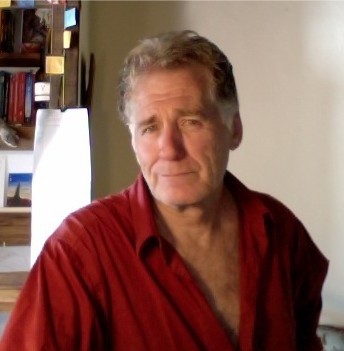
“My standard as a comparative mythologist is to describe and demonstrate the interactivity of divine imagination with human imagination.”
In the summer of 2016, a close-knit team of allies laid the groundwork for a foundation to support John and preserve his legacy: Nemeta, “sacred groves.” It will serve as John’s retreat as well as a place to store his library and archives (Ambergane Trust, see below), and, on some occasions, to receive students and offer seminars and classes.
John Lash is the only scholar of comparative mythology so far known to have rewritten a classical myth, giving it a different outcome: Orpheus and Eurydice.
* * * * *
Ambergane Trust: Library and Archives
The library consists of about 4653 (and counting) books in a number of categories:
1. Comparative mythology, anthropology, ancient cultures, prehistory
2. History of religions and mysticism
3. Archeoastronomy, ancient calendrics
4. Astrology and astronomy, sky lore, precession, World, Ages, the Zodiac
5. Science, physics, cosmological theories
6. Shamanism, entheogenic practices, psychonautics
7. Gnosticism and Mystery Religions, Nag Hammadi Library
8. Dead Sea Scrolls, origins of Christianity
9. Esoterics: alchemy, theosophy, Cabala, anthroposophy
10. Poetry and poetics, Modernism: literature and art
11. Romanticism: histories, writings, theories, literature and art
12. Art books, especially Modernist works; also primitive and esoteric art
13. Arthurian Romance, Celtic legend, Parzival and Tristan studies
14. ET and UFO studies, theories, Philip K. Dick
15. Greek and Roman Classics
16. Gaia theory, sacred ecology
17. Geology, earth sciences, natural history
18. Goddess religion, matriarchy
19. Hindu Tantra
20. Buddhism : Dzogchen, Zen, Ch’an, Mahayana
21. Biographies
22. Novels
23. Revisionist History
Italics indicate areas where John has been been publicly recognized for his writings and expertise.
The archives include about 20 notebooks of esoteric and mythological research, representing studies developed over 40 years. It contains original work on the Zodiac and the constellations (basis for Quest for the Zodiac), and comprehensive research in naked-eye star lore, archaeoastronomy, the 2012 endtime, the World Ages, and precession of the equinoxes. It includes unpublished manuscripts such as Lord of the Clones (early draft of Not in His Image), The Other Zodiac and Dendera Decoded.
URL to the archive of the Ambergane Library
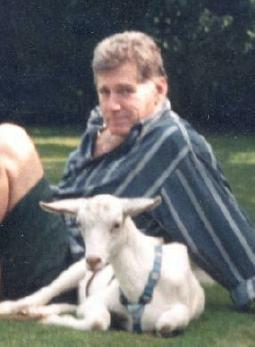
With Margarita, Belgium, 1998
John dates the inception of his life-long adventure in “experimental mysticism” to a lucid dream at the age of four. In the introduction to NIHI, he explains the impact of finding Nietzsche in his teens. It was the breakthrough event of his youth that liberated him but, at the same time, plunged him into a ten-year period of despair-driven wandering in which he traveled through 30 countries. Whence the despair? It came from lacking a clear sense of purpose. He assumed that he could not have been brought into existence in this world only to live without a purpose for existing.What resulted from that torment?
Once again, Nietzsche was the touchstone for the definition of purpose when he finally found it. He objects to the “superman” spin attributed by all scholars from certain passages in Nietzsche. Especially this one from Thus Spoke Zarathustra, cited in the introduction to Not in His Image:
Behold, I bring you the Superman! The Superman is the meaning of the earth. Let your will say: The Superman shall be the meaning of the earth! I beg of you my brothers, remain true to the earth, and believe not those who speak to you of otherworldly hopes!
John proposes translating the notorious and universally maligned ubermensch as “ultrahuman,” rather than “superman.” He paraphrases another much-cited line in that work in this way:
I teach you the ultrahuman. The human condition is something that shall be overcome. What have you done to overcome it?
John argues that self-overcoming has two modalities, individual and generic, or species-based. You get over yourself as an ego-centered entity, and you get over the human condition. Only then, on those two counts, can anyone “remain true to the earth.” Only then can anyone realize, embrace, and fulfil the purpose for being alive — which is not a foregone conclusion, but the result of free and sovereign choice. That is the core of conception of life previewed, but not completed, by the high tide of Romanticism. It stands to this day as the essential message he seeks to communicate to the world at large, but more intimately, to those who care and dare to accept it.
17 October 2025, Hag House, Galicia, Spain